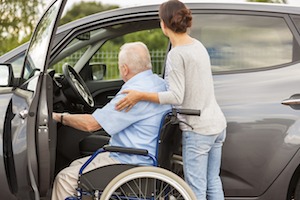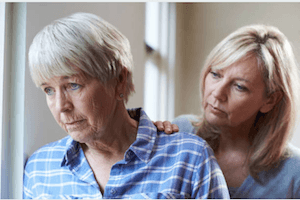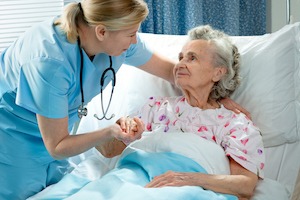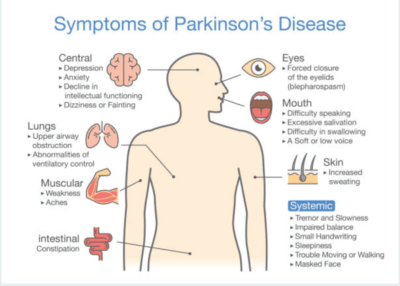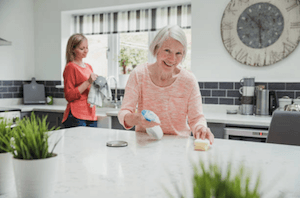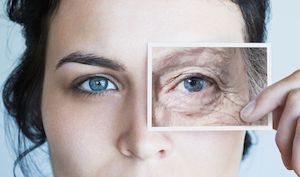Is your senior loved one facing a hospital discharge?
After a hospitalization or stay in a medical facility, older adults often need additional care in order to have a full recovery. A successful hospital discharge, and subsequent in-home care support, helps older adults stay on track with their their recovery, and regain health and independence.
So what does being discharged really mean for someone’s health? We have gathered some information to help you understand what a successful discharge is, why many seniors aren’t prepared to leave the hospital, how a discharge checklist improves recovery, and how to get seniors to accept the continued help they need.
What does a hospital discharge really mean?
When someone is discharged (released) from the hospital, or a short-term stay in a facility, it means their doctor (and/or nurses) have determined that they’ve recovered enough to no longer need hospital-level care. It doesn’t mean they’re fully recovered.
Even though the older adult is able to leave the hospital or facility, they will still need additional care at home to recover. They might even need an intense level of care for weeks or months.
Depending on the needs of the older adult upon discharge, and the doctor’s plan of care, an in-home care company can match your loved one with a care provider(s) to come to their home and assist them with recovery.
Why aren’t some seniors well prepared for a hospital discharge?
A successful discharge means that the older adult leaves the hospital and continues their recovery without any major problems or returns to the hospital. This should be the goal of every discharge.
However, hospital discharge nurses are often loaded with many cases, meaning they are unable to spend a lot of time helping patients and families understand everything they need to know about post-hospital recovery.
That’s why it’s so important to make sure you and your elderly loved one have all the necessary information before leaving the hospital. It is also important to find an in-home care company that you trust to become your advocate during this time and to assist with transition and recovery.
How can a discharge checklist help your loved one recover?
During your loved one’s stay at the facility, their doctor and staff will work with you to plan for their discharge. You can use this checklist to prepare. Talk to your loved one’s doctor and the staff (like a discharge planner, social worker, or nurse) about the items on this checklist. Check the box next to each item when you have completed it, skip any that don’t apply to your loved one’s situation, and take additional notes as necessary. An in-home care provider can help you with many of these items, and to make sure the transition out of the facility goes smoothly.
Your Discharge Checklist:
What's Ahead?
◊ Ask about care options after discharge. Make sure in-home care is an option.
◊ Prior to discharge, contact the in-home care company to get a care provider that is right for your loved one’s needs. Make sure you have help arranged BEFORE discharge.
Your Loved One's Health
◊ Ask about problems to watch for and what to do about if they arise. Get an emergency contact at the hospital.
◊ Create a drug list for all prescriptions, over-the-counters, vitamins, and herbal supplements. Share this with hospital staff and caregivers.
◊ Ask if your loved one is ready to do these activities. Circle the ones they need help with:
- Bathing, dressing, toileting
- Climbing stairs
- Cooking, food shopping, house cleaning
- Getting to doctors’ appointments
- Managing prescription drugs
Recovery and Support
◊ Ask if you’ll need medical equipment (like a walker). Who will arrange for this? Get a contact in case you have questions about equipment.
◊ Ask the staff to give your care provider a detailed plan of care and written discharge instructions for your loved one.
◊ Ask the staff to show you any tasks you might be able to perform yourself to help your loved one remain comfortable.
◊ Ask to speak to a social worker if you’re concerned about how you and your family are coping. Write down information about support groups and other resources. Social workers can also help you understand your payment options for in-home care.
◊ Create an appointments page to write down any appointments and tests your loved one will need in the next several weeks. Bring the drug list and discharge instructions with you to all appointments.
American In-Home Care and our sister companies can help you or your loved one prepare for a hospital discharge, and be comfortable during the transition. We have a special package called the Welcome Aboard package that specifically assists patients who are discharging from a hospital or facility, and are on their way back home. Contact us today for more information.

